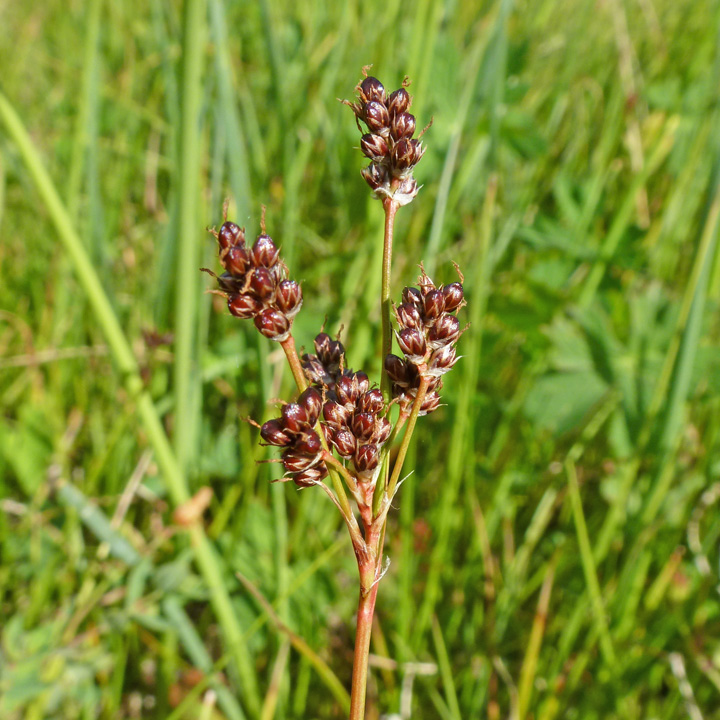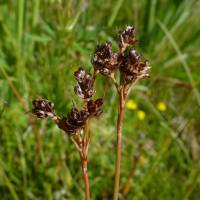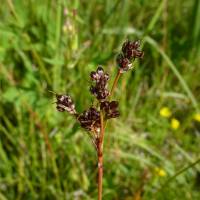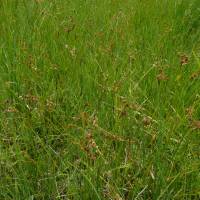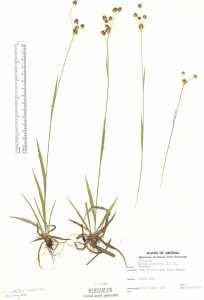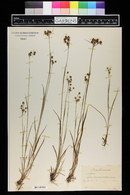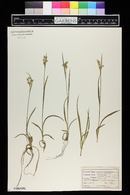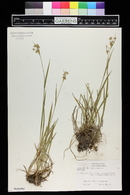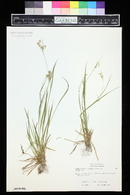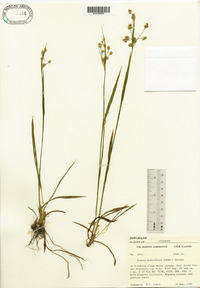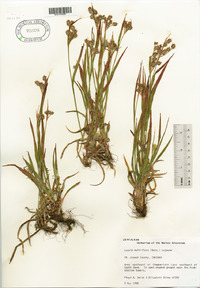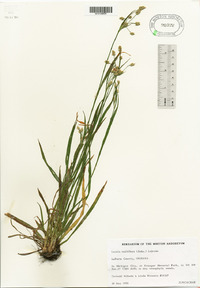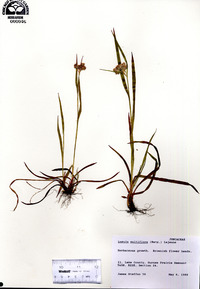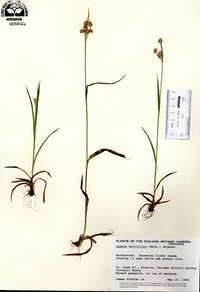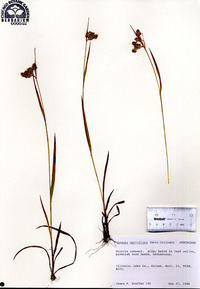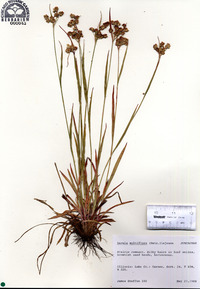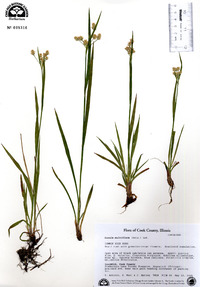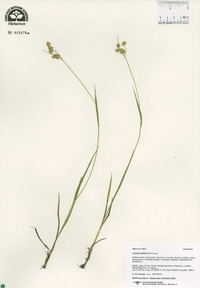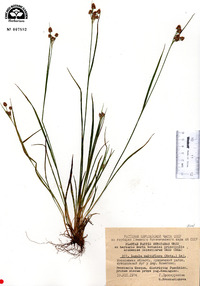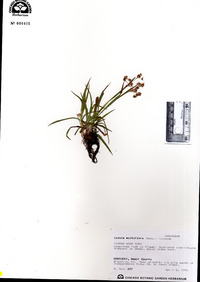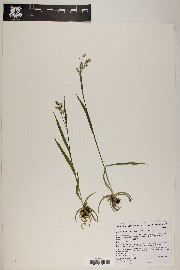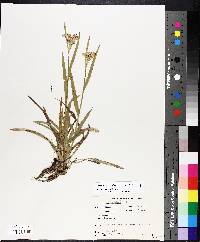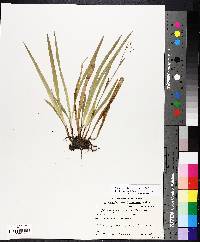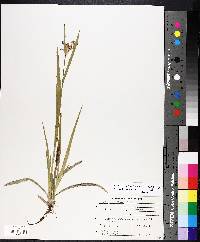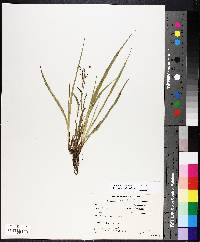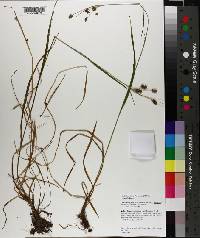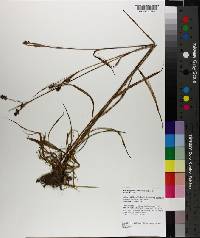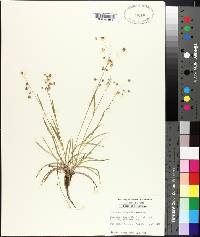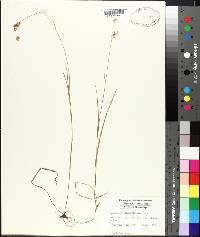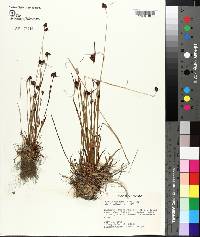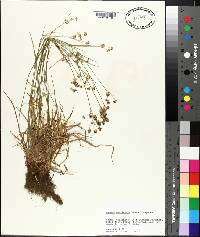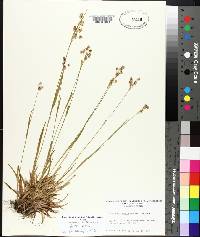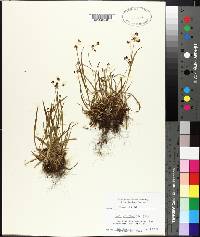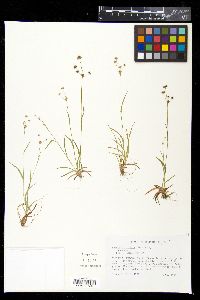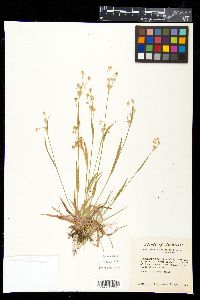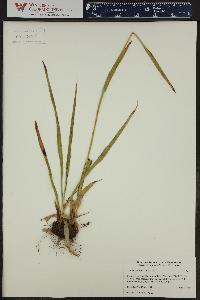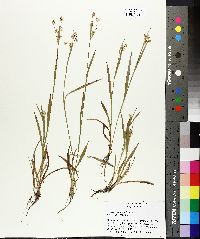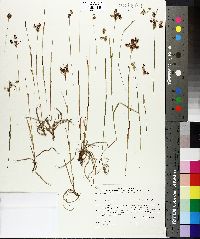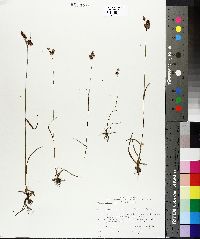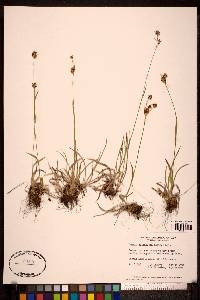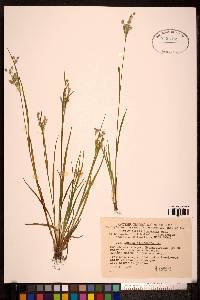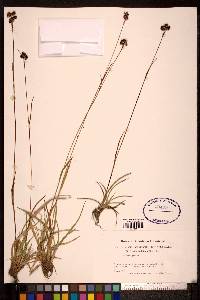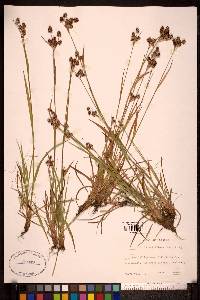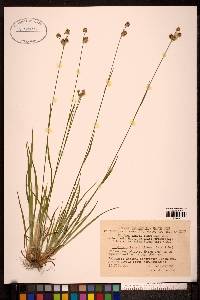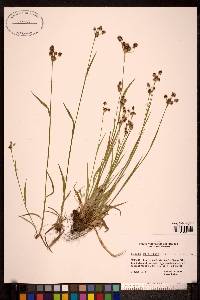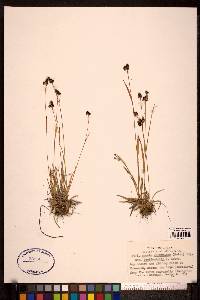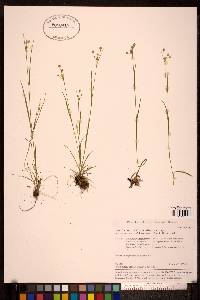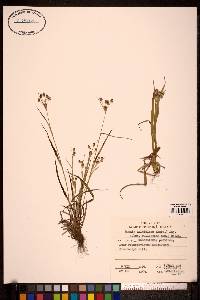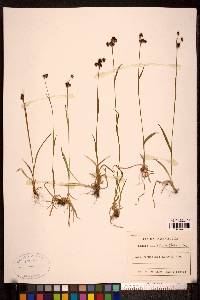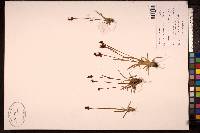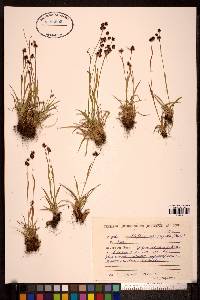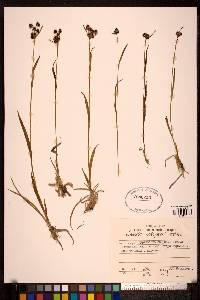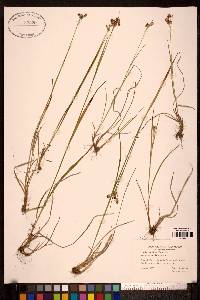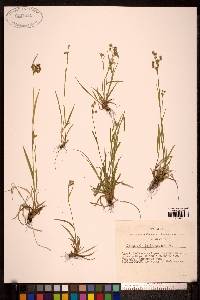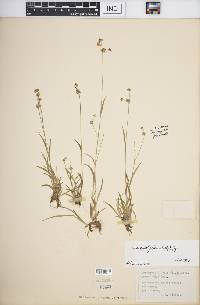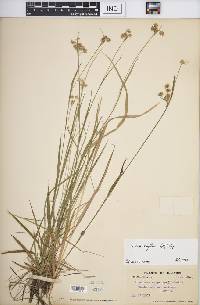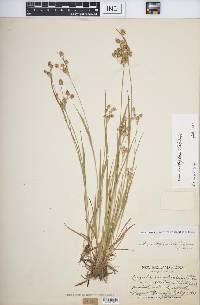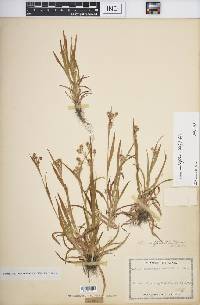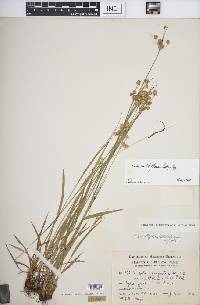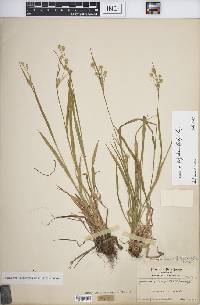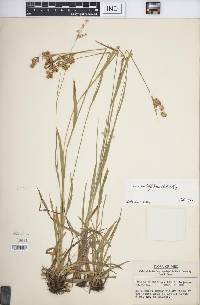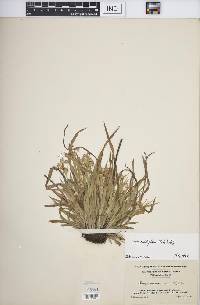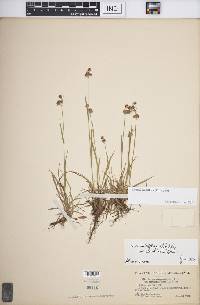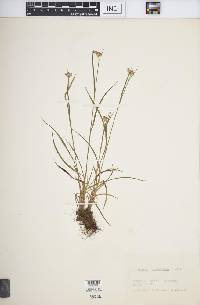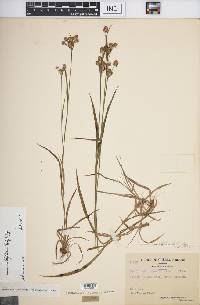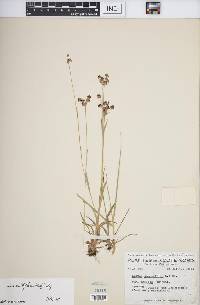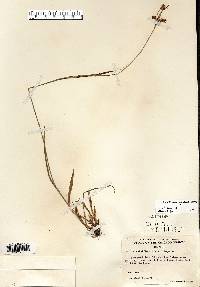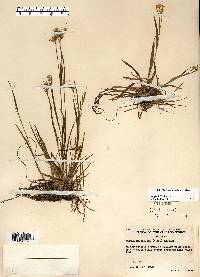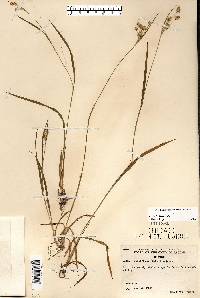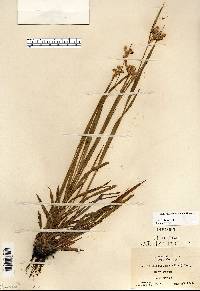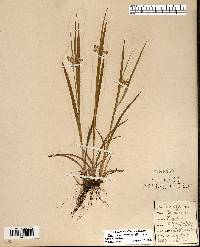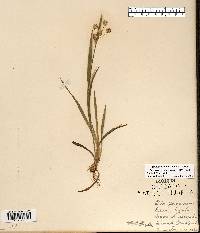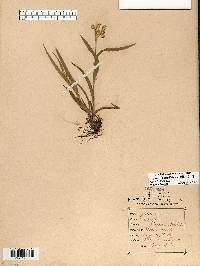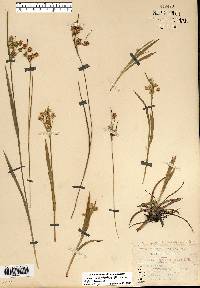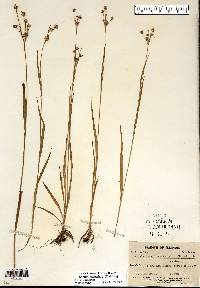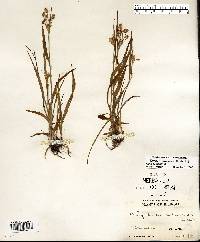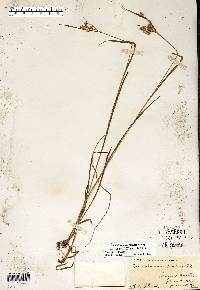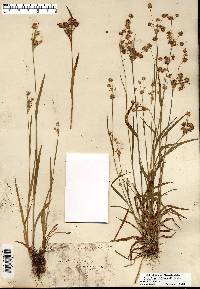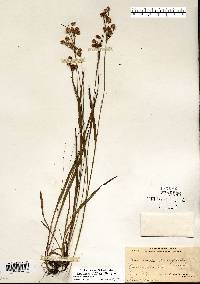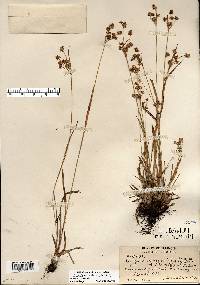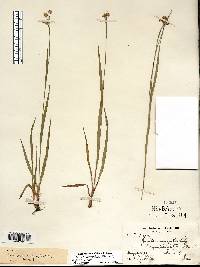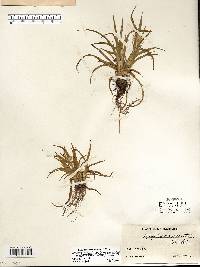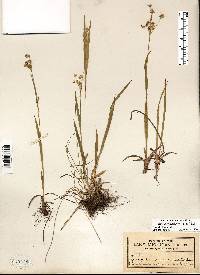Luzula multiflora
|
|
|
|
Family: Juncaceae
Common Wood-Rush, more...common woodrush
[Luzula campestris var. acadiensis] |
Culms densely to loosely cespitose, 10--40 cm. Leaves: basal leaves 3.5--12 cm x 2--6 mm; cauline leaves equaling or exceeding inflorescences. Inflorescences: glomerules 3--16 (each with 8--16 flowers), 1--2 nearly sessile with others on evident peduncles, mostly cylindric; secondary branches sometimes present, usually straight, erect; proximal inflorescence bract barely as long as to exceeding inflorescence. Flowers: tepals pale brown to chestnut brown to blackish with clear margins, 2--4 mm; outer and inner whorl ± equal, or outer whorl slightly longer (outer whorl pointed, inner whorl pointed or truncate-mucronate); anthers not more than 2 times filament length; stigmas 0.8--1.5 mm; styles not persistent in fruit. Capsules pale to brown to black, globose, shorter than to ± equaling tepals. Seeds 1.1--1.7 mm; caruncles 0.2--0.6 mm. Many names have been applied to members of this variable complex throughout the range of this flora. No monograph is yet available to enable a satisfactory treatment.
Perennial grasslike forb 10 - 40 cm tall Leaves: both basal and two to three alternate on stem, linear, flattened, grasslike, 3.5 - 12 cm long, 2 - 6 mm wide, softly long-hairy along edges, and thickened at the tip. Inflorescence: terminal, with three to sixteen, erect, straight branches (some very short, some branching again) ending in somewhat cylindric flower clusters (glomerules). Each glomerule is a tight, dense, compact cluster of eight to sixteen, tiny, radially symmetric flowers. Flowers: tiny (under 0.5 cm tall), radially symmetric, with six tepals (in two whorls of three), six stamens, one superior ovary, one long style, and three stigmas. The 2.8 - 3.6 mm long tepals have straw-colored to brown centers with translucent edges and pointed tips, the anthers are up to twice the length of the filaments, and the stigmas are 0.8 - 1.5 mm long. Fruit: clustered, single-chambered, three-valved, pale to brown, rounded, blunt-tipped capsules which are shorter than the tepals. Stems: loosely to densely tufted, erect, slender, and arising from short rhizomes. Seeds: three per capsule, 1.1 - 1.5 mm long, plump, almost rounded with a whitish, 0.3 - 0.6 mm long terminal appendage (caruncle). Bracts: two subtending inflorescence, leaf-like, and equal to or barely longer than inflorescence. In addition to the two leaf-like bracts, each stalk within the inflorescence is subtended by one or two smaller bracts, and directly below the flowers are two to three very small bracts (bracteoles). Similar species: Luzula multiflora is very similar to L. bulbosa, except that species often produces white bulblets at the base of the leaves, its capsules are longer or at least the same length as the tepals, and the seeds tend to be a bit shorter on average (up to 1.3 mm). All of our specimens are the typical subspecies as described above, but there are two other subspecies found in North America, L. multiflora ssp. frigida and L. multiflora ssp. kobayasii, both of which differ in characteristics of tepal shape or color, and some leaf characteristics, but are also much more northern in distribution. The other species of Luzula reported in the Chicago Region have many fewer flowers in the inflorescence clusters (single, pairs or rarely up to eight). Members of the genus Luzula differ from the genus Juncus by having long-hairy leaf edges, and single-chambered capsules with only three seeds. In addition, species of Luzula will never have septate leaves or auricles at the top of the leaf sheaths. Flowering: April to July Habitat and ecology: Occasional, mostly in open, dry woods. Occurence in the Chicago region: native Notes: In the past, this species has been categorized as a variety of the European species Luzula campestris. In fact, many older specimens in North America have only been identified as L. campestris, but they are clearly the North American species, not the European, and thus should be L. multiflora. Author: The Field Museum FNA 2000, Kearney and Peebles 1969 Common Name: common woodrush Duration: Perennial Nativity: Native Lifeform: Graminoid General: Perennial with densely to loosely cespitose stems, 10-40 cm tall, leafy stems. Vegetative: Basal leaves 3.5-12 cm long by 2-6 mm wide, cauline leaves equaling or exceeding inflorescence, sheaths closed, without auricles at throat, usually pilose; margins with long, soft, multicellular hairs, apex often thickened. Inflorescence: Glomerules 3-16, each with 8-16 flowers, 1-2 nearly sessile with others on peduncles, mostly cylindric; secondary branches sometimes present, usually straight, erect, lower inflorescence bract barely as long as to exceeding inflorescence; flowers with pale brown to chestnut brown tepals to blackish with clear margins, 2-4 mm; outer and inner whorl more or less equal, or with outer whorl slightly longer, outer pointed, inner pointed or truncate-mucronate; anthers not more than 2 times filament length; stigmas 0.5-1.5 mm; styles not persistent in fruit; capsules pale to brown to black, globose, shorter than or equal to tepals. Ecology: Found in wet soils in meadows and along streams from 6,500- 11,000 ft (1981-3353 m); flowers May-September. Notes: Luzula is distinguished from Juncus by the leaves having hairy margins and the fruits being 1-chambered. Ethnobotany: Used as a ceremonial emetic. Etymology: Luzula is thought to be from the Italian lucciola, for firefly or glowworm, while multiflora means many flowered. Synonyms: None Editor: SBuckley, 2010 Densely cespitose, 2-4(-5) dm; basal lvs several; cauline lvs 2 or 3, flat except toward the slender, callous-pointed tip, 2-6 mm wide; infl of 1(-3) subsessile and (3-)5-10(-16) pedunculate, ovoid to short-cylindric glomerules, the peduncles strongly ascending, ±smooth, sometimes branched; fls 7-15 per cluster; tep lanceolate, pale or brownish to dark brown, the outer 2.5-3.5 mm, equaling or a little longer than the inner; anthers 0.8-1.5 mm, 1-2.5 times as long as the filaments; style 0.4-0.7 mm, a little shorter than the ovary; fr shorter than the tep; seed-body ovoid to broadly elliptic, 0.9-1.2 נ0.6-0.9 mm, with an evident caruncle 0.3-0.4 mm; 2n=(24) 36. In wooded or open (often disturbed) places; widespread and apparently native in most o four range, s. to Del., Ind., and Mo.; also in Eurasia. (L. campestris var. m.) Gleason, Henry A. & Cronquist, Arthur J. 1991. Manual of vascular plants of northeastern United States and adjacent Canada. lxxv + 910 pp. ©The New York Botanical Garden. All rights reserved. Used by permission. |

